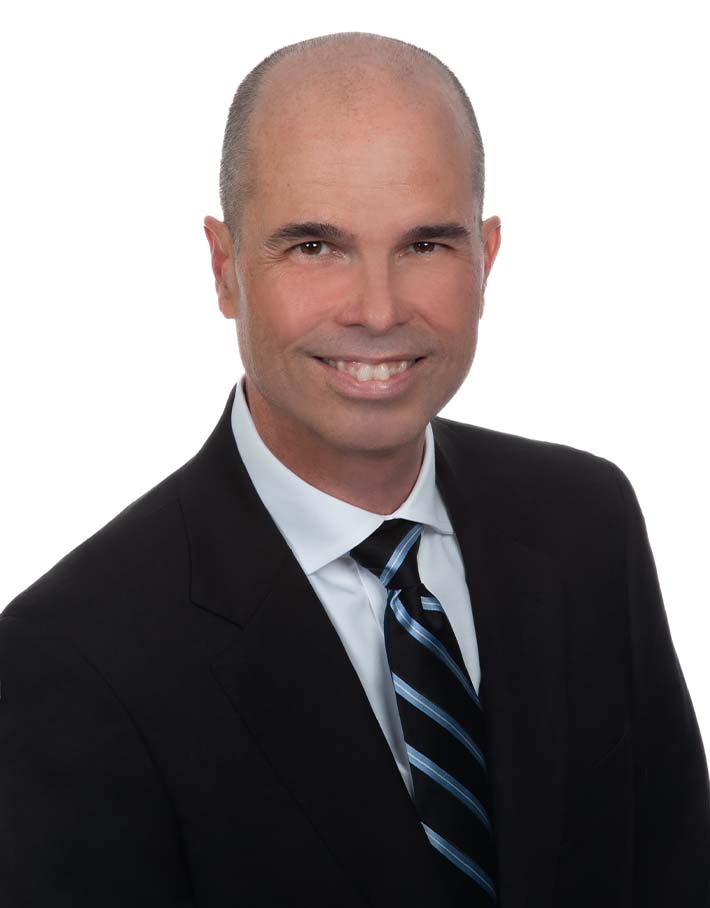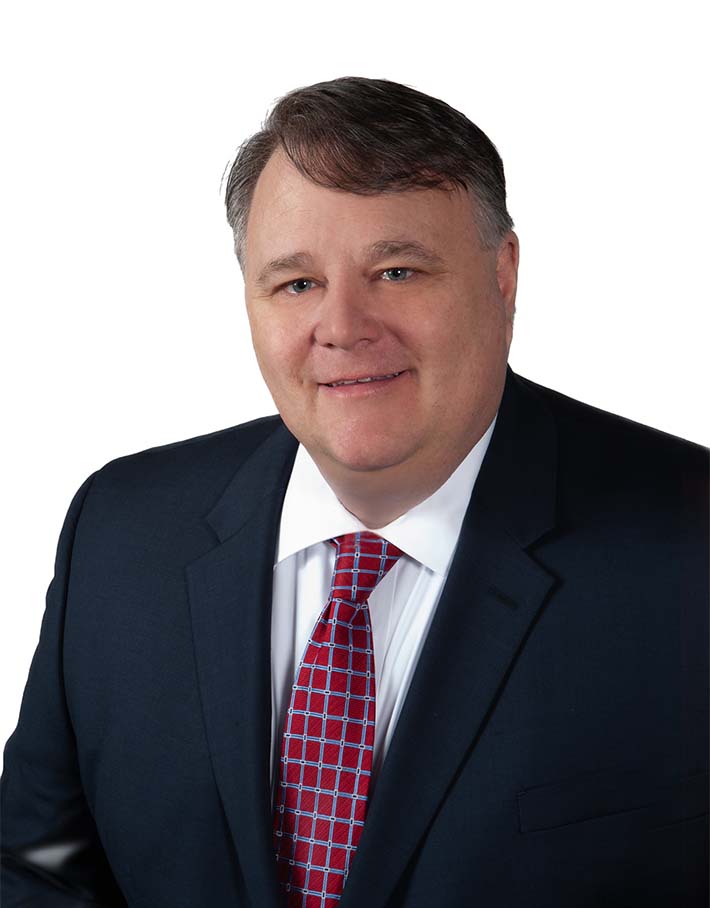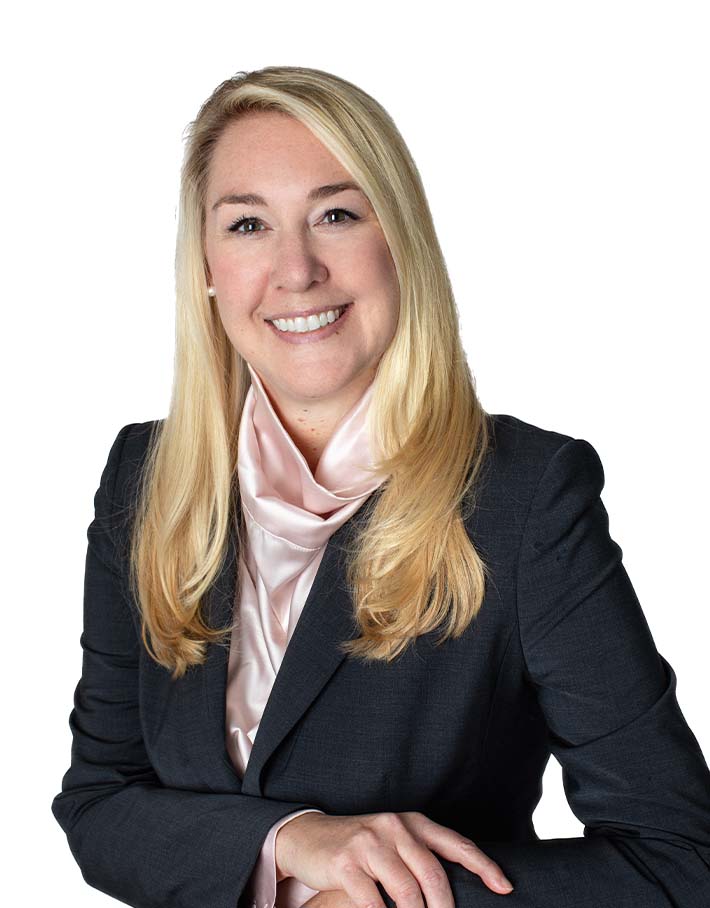Starting Your RIA – Establishing Your Compliance Program
By Buddy Doyle, Sarah Sutton and Jay Donlin
Subscribe to our original industry insights
This podcast focuses on establishing your compliance program, part of our series on Starting Your RIA. Our experts discusses the regulatory aspect of starting an RIA. There are some basic things you need to do to get started, as well as regulatory perspectives you should consider.
Whether you are starting your business or need a re-boot as the industry changes, we will help you define your practice and provide solutions to help you through all phases of your business, from registration to succession planning. At Oyster we listen to your needs and will help you create efficient, effective policies and procedures tailored to your firm’s business model, select your technology platforms to give your clients the best service and prioritize risks so you know where to focus your time. Oyster Consulting has the Compliance, Operations and Strategic professionals under one roof to help you optimize your business. Our Governance, Risk and Compliance experts have the industry knowledge and practical expertise that your firm needs. Whether you need to Register, outsource your CCO role or conduct your Annual Review, our consultants will work with you to achieve a reasonable system of compliance and industry best practices.
Transcript
Transcript provided by Temi transcript services
Oyster: Hi, and welcome to today’s podcast – Establishing Your Compliance Program, part of our series focusing on starting an RIA. I’m Libby Hall, and with me, are Oyster CEO, Buddy Doyle and consultants, Sarah Sutton, and Jay Donlin. Today, we’re going to be talking about the regulatory aspect of starting an RIA. There are some basic things you need to do to get started, as well as some regulatory perspectives you might consider. Buddy, why don’t you take it from here?
Hi everybody. I’m Buddy Doyle. I’m pleased to be joined today by Jay Donlin and Sarah Sutton, two of our experts on RIA, and who have helped a number of our clients move from where they were to where they’re going. And we’re pleased to have you here, Jay, Sarah. Welcome.
Jay Donlin: Thanks Buddy.
Sarah Sutton: Thanks Buddy. Good to be here.
Buddy Doyle:
You know, one of the things that we often hear from firms, particularly the ones that are losing their reps to go out and start their own RIA, is they’re chasing less regulation. I actually think it’s a different regulation, but I’m not sure it’s less. Sarah, you work with a lot of RIA clients on the compliance front of things. And I’m curious on that front, there is a regulatory rigamarole to go through to start an RIA as well. But can you, Sarah, tell us a little bit about the regulatory side of things in getting started?
Sarah Sutton: Sure. Yeah. And that’s one of the ‘quote unquote’ maybe scary items that some folks have not had to directly experience in their previous life, whether they were with a broker dealer or a regional firm. So when you are looking at some of those types of responsibilities, the one thing that you will have to do is to name a CCO. That can be you, the owner: it could be someone else that comes over on your team depending on how you structure your firm initially. But that’s one of the things you’ll have to have a comfort level with is who is going to be your CCO. There is less regulation currently in the RIA space versus the broker dealer space. But at the same time, there are a lot of things that you have to comply and address throughout the year.
What we recommend is working with or using a compliance calendar or program, and that will help you navigate through all of the different items and things that you’ll have to do on a daily, weekly, monthly, quarterly, annual basis. There are some regulatory filings that you’ll also have to be aware of and make sure that they’re done in a timely manner. First thing you’ll have to do is register with the SEC. And that’s a process that can take a little bit of time and take some planning and preparation, but you can navigate through it, if it’s what you truly would like to do.
Buddy Doyle: Yeah. I think the interesting thing about becoming an RIA is there are so many options available to you. You’ve got the regulatory side of this that needs to marry the way you do your business. And so, when you start your RIA on the regulatory side of things, you’ll answer some questions on what’s called an ADV1, which is a notice to a public document that describes sort of Q and A, check the box type of answers. And then you have an ADV2 brochure that would describe, supposedly in plain English or as close as you can get to it and still comply with regulations, to allow your customer, to know all of your conflicts of interest and to understand how you’re going to serve them and the services you’re going to undertake. How you’re going to make decisions on where to direct trades, how you’re going to look at risk in portfolios, and describe your fees very clearly.
And when you’re thinking about that, one of the things you need to consider as you’re coming out of a wire house or an independent rep firm even, is that your mindset and the regulators mindset may not exactly be aligned and what is a material conflict of interest. So you’ll want to go through this process of thinking through the risk you’re taking, as you describe how you do things and might want to think about in your disclosures. Sort of going a little further than you may have felt when you were talking to your compliance department at your firm, because when they come in to do an exam, from the SEC or a state, and they all have their point of view that they’re going to bring to that. That may not line up with yours. It’s much different than a branch exam that you may have gone through in your past. Your compliance team at your current organization, may seem grumpy, but that’s because they’re the ones interacting with the regulators and feeling the heat there.
And not that you’ll feel heat, you can go through exams and do really well, but just keep in mind as you’re going through this process, you want to question your own judgment on these things and be open minded and having people to bounce that around with. I would encourage you to talk to people that have run an RIA and gone through an exam and say, what was that like? I’d encourage you to talk to compliance professionals and experienced folks like Jay and Sarah to talk about what we’ve seen out there. Get good advice along the way. When we started Oyster, we had a very significant business plan that we developed and implemented. And then, of course, I think it was Mike Tyson that said, ‘Everybody’s got a plan until you’re punched in the face.’ Just realize when you get going, you also need to reassess pretty quickly how things are going and make those quick decisions quickly.
Again, there are consequences to all of this stuff, and everybody hates consequences, but I think from a regulatory perspective, again, there’s that component that’s always hanging out there of the rules are set, right? But you don’t necessarily know them all. And then in FINRA it’s a more rules based type of approach with a little bit more detail around what’s good. What’s not good in the SEC world, it’s principles based. And so it’s a little squishier around things and how you guess the way to approach things or how the way to approach things as part of your experience will make a big difference to you. And we, we talked a little bit Sarah, about the difference between being in a firm, uh, from a regulatory perspective, being in your own firm from a regulatory perspective. And you’ve been on both sides of this, what’s the difference between really being a branch audit and an SEC audit. Can you talk a little bit about that?
Sarah Sutton: Yeah, definitely. So again, like you mentioned, the kind of the rules-based versus the principal based, so there’s rules on both sides of the field as there are everywhere. When you get audited by the SEC or you’re abiding by the SEC’s rules, it’s the same as abiding by FINRA. There are just a few things that you have more flexibility on. The folks that were in kind of the broker dealer warehouse go into the branch every day and the lights are turned on. They saw that they didn’t have as much flexibility as others did in the RIA world. And that was very attractive to a lot of folks. There’s still the regulatory side of it, but you have the flexibility of being able to choose how you run your business. You’re not being told directly what you need to do, what you need to sell, what you need to offer from the regulatory standpoint and books and records, how you’re servicing your clients.
You know, Buddy had mentioned that on the RIA side, you’re a fiduciary, and it’s possible that before you were not for all of your clients, working in that fiduciary capacity, and it’s a change in mindset. But it’s something that I think a lot of RIA owners and advisors really are very open to because it helps them. From the standpoint of being able to help their clients manage their assets, their futures, their wellbeing. And not having such stringent guidelines from a larger firm is helpful. In many respects, we look at the books and records and what you have to have to set up an RIA again, it’s very similar to of branch audits that you may or may not have been involved in, in your previous experience. And you still have to have client records; still have to document your investment allocation decisions.
You still have to keep up with how often you’re meeting with clients. Again, there are some additional filings that there are some filing for regulatory standpoint, with the SEC that you’ll have to do that you probably never had to do before. And those might seem scary, but they’re just documents that you have to fill out. So you definitely need to make sure that you do it right the first time. Then when you do start out as an RA, there is a, a good chance that the SCC will come in and inspect your office – kind of an initial inspection within the first year. We’ve seen that very recently kind of increase. The time period has been moved up, but we’ve also seen an increase in folks moving to the RIA space as well. So it’s nothing to be afraid of. Actually, it’s one of those things is you’re going to be working with a regulator.
So embrace it, make sure that you’re, you’re ready for it. You’re open, you’re honest, and that you can supply anything that they ask for. So again, from a documentation standpoint, a branch audit and an SEC audit is very similar. You’re going to have to produce some of this same documents you had before. Some of the things that will be basically not as readily available initially are some of the things that you’re going to have to work with your legal counsel and kind of get in place, which are going to be your advisory agreements. You know, they’re not just provided for you. So there’s some things like that, that again, you’ll need to make sure that based on the business that you want to have that as you build it out, you get to kind of tweak those finer points to make sure, again, that you’re offering your clients what they want, what you want to offer, build it out the way you want it, but it’s all has to be reflected in the documents as you structure your company, the agreements you have with your clients and the service level you offered your clients as well.
Buddy Doyle: Yeah. And I think it’s really kind of important to keep in mind, to Sarah’s point, the fact that you’re running your business in different ways. You do have that flexibility. We have clients that it was fantastic when we started Oyster and got out there to different business models and ways people operated, but we can see two clients in a day and one will be a financial planner putting together Monte Carlo financial plans for their clients, cash flow analysis and creating portfolios with ETFs to try to achieve their goals. And in a low cost manner to, and their benchmark is the plan, right? We’re targeting your retirement plan. And then we can go to another customer that is more of a ‘we run models for different clients for different time horizons and risk tolerances’.
And we tactically tilt and try to beat the market. And our benchmark is not the plan, but our benchmark is an index, a custom index even. And they’re both right. And they both can be compliant, but they have to be described in very different ways to the customer so that your clients or customers really understand how you’re operating. And then there are rules and regulations around how you make different decisions. And when you select a custodian, did you select a custodian, or did you select a number of custodians? When you select your products, your products weren’t selected for you, you’re selecting your products. What’s the analysis that’s gone into that? And I think certainly we see both sides of the coin here because your clients are your clients. They have certain needs, certain expectations, and you’re trying to serve them. Your business is unique, and your programs need to be unique. And Jay, you can come back to this custodian, which I know is more and more becoming homogenous maybe, but it really isn’t. Right. Because we see our clients using custodians in a lot of different ways with a lot of different tools. But what are some of the things that you guide clients through in that custodian selection process that does make a difference?
Jay Donlin: Yeah, Buddy. One thing that you brought up was that this relates to fiduciary and conflicts, and we have actually seen clients that thought that they had disclosures about fees and client fees that the custodians nailed or any kind of revenue sharing that they might be getting. And they thought they had it perfectly disclosed in ADV language that they had constructed. And the regulator still came down on them and said no, this is something that we don’t want you doing. And so one of the things that we look at is the breadth of products and services offered by the custodians, just the basic blocking and tackling. They all have got down, but they all have different products. And depending on your client needs, you may want to have multiple custodians because you may have different client needs that are serviced better by two different custodians.
And one of the things that we help you walk through is what do I need? You know, what are, what are my wants, my wishes and my needs and document those and kind of try to align them through a decisioning process, a matrix, so to speak where you’re figuring out where all the various custodians stack up in those to meet those needs. And so that’s the process that we walk clients through in order to kind of make sure that if they need to multiple, then that’s what they have. You know, if they just have one that kind of services what their client needs are great; but you have to be willing to defend your custodian choice to the regulators. We’ve had clients come in and basically the regulators have said, you need to do a custodian review. Why are you on this custodian? This firm only had one custodian.
Well, it’s not that it was a bad custodian and that there was different things, but are you getting the best deal for your clients? Are you meeting your client needs the most effectively on this particular custodian? These are items that you need to go through periodically, not just on your initial, because things change. Custodians change. Needs within the market change, needs within your clients change. And you need to review this periodically just to say, Hey, am I still with the right custodian? Or do I need to go get another one or do I need to transition? It’s something the regulators have actually questioned in their reviews.
Buddy Doyle: And they certainly will. And I think when you have a custodian or you have multiple custodians, when you have multiple custodians, you’ve got sort of a different decision tree to support your analysis with, right. Why did I pick one custodian over another for this particular account or this particular household? You know when you have multiple custodians, there are some challenges in dealing with clients that are on two platforms. At least at the core, a lot of this RIA stuff., and a lot of the regulation stuff is to go back to seventh grade algebra, it’s showing your work in the margins. Why did I make this decision? What was the math behind it? What was the rationale behind it? And you have to be able to back that up. And when you have more paths, you have to show the decision around which path you chose client by client, account by account.
The other thing, Jay, you mentioned different fees, different pricing structures, different products that are offered. Don’t be bashful in your disclosure. Put it out there, be blunt, be overt in your disclosure. And it’s really important because regulators read that stuff and they put their own point of view on it. And that point of view may have very little to do with what you’re doing, but it has more to do with what they see in the overall marketplace. And if you’ve got your work documented pretty well, you’re going to be better off when they’re quite frankly second guessing your judgment potentially over those decisions. And Sarah, I know you go through this thumb wrestle with regulators on a pretty routine basis because you’re more in the compliance side of things here, but do you see any distinctions with that multi custodial approach that’s beyond what we’ve kind of mentioned here?
Sarah Sutton: Yeah. So I think like you’d mentioned before, really just making sure that you disclose what is available to the clients and basically the decision tree, how you come to the decision to recommend one custodian over another custodian for a client, um, custodians don’t always offer the same products like we just talked about. So you may have one custodian that has a lower cost mutual fund share class and another custodian does not offer it. It’s just not on their platform. So those are the kinds of things, kind of really getting into the weeds you have to think about. A topic that the SEC has been looking at pretty carefully here recently, and we’ve really encountered, if you aren’t sure if you should disclose it, just disclose it. It’s easier to explain why it’s there than why it’s not there. And I think that at first is kind of hard for some folks to maybe not realize, but come to the conclusion of, but when you’re sitting across from an auditor and you’re having to answer exactly why you have specific conversations with clients, why you recommended a particular investment or a particular custodian, it comes down to the level of detail that you’ve discussed with your client.
That’s in the documents that you have, it’s in the process on how you work with and manage your client’s assets and the level of service you provide. It’s going back to, if you have a client or a client base that you don’t want to offer, all of your services to, you have to document that you can have different platforms where it’s more of a subadvisor for you where you’re not having to do as much hand holding per se with clients that may be in the earning phase of their life. So they haven’t acquired that wealth yet, but they will because their parents or grandparents are clients of yours that you do offer a higher level of service for. So it’s looking at those different aspects and how you can really manage your client’s expectations and then appease the regulators so that they know that you’re doing what’s in the best interest of the client.
Buddy Doyle: Yeah. You, you have to shift your mindset a little bit as a financial advisor when you start your own RIA. The financial advisors, I know that I’ve worked with in wire houses and at regional firms and boutique firms and all the way through, they all tend to have this desire to help their clients meet their financial goals and objectives. But when you run your own RIA, you have to think about this conflict-of-interest thing, and the one thing I would encourage you to do as you go through this process is think about, does it impact the fees that your client pays directly or indirectly? Uh, yes or no. And does it impact the fee that you receive, or you pay directly or indirectly to your custodian or to anybody else? And if the answer to those questions are, yes, there’s a conflict in there, right?
And you may be managing that conflict perfectly, but it’s still conflict. And so you have to kind of separate, I’m doing the right thing for my client all the time. Do I now have a regulator out there that looks at 15,000 different organizations, sees the worst in people, who’s going to come in here with a mindset from their experience and demand that you prove you’re doing it right. And I think because we’ve seen the RIA market flourish and the numbers grow, we’ve also seen that regulatory scrutiny really start ramping up as it becomes more and more of a material marketplace issue in how people in this country receive financial services. Now I don’t want to scare you away from it because again, I think people have done this and they’ve done this successfully. And if you’re thinking about doing this, you’re about to boldly go where tens of thousands of others have gone before and survived. With that, we’re going to wrap it up for today. Thank you guys for sharing your wisdom with the listeners.
Oyster: Join us for more upcoming podcasts on starting your own RIA. If you’d like to learn more about how Oyster can help you, contact us@oysterllc.com and we’ll be happy to chat. If you like what you heard today, follow us on whatever podcast platform you listen to and give us a review. Reviews make it easier for people to find us. Thanks and have a great day.





